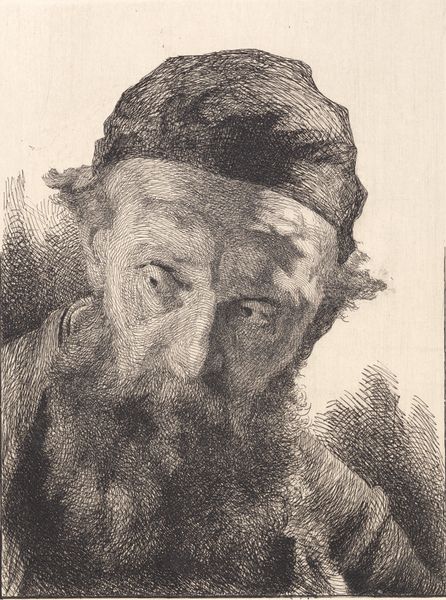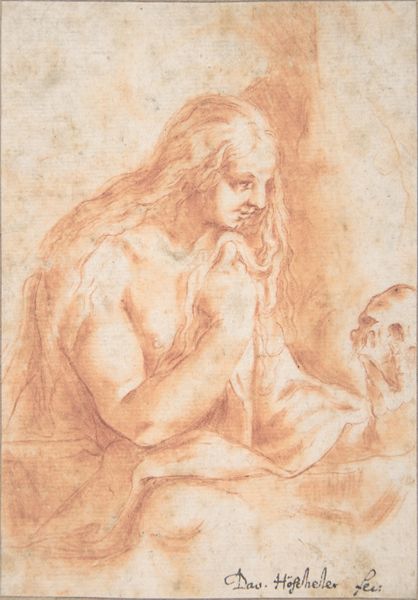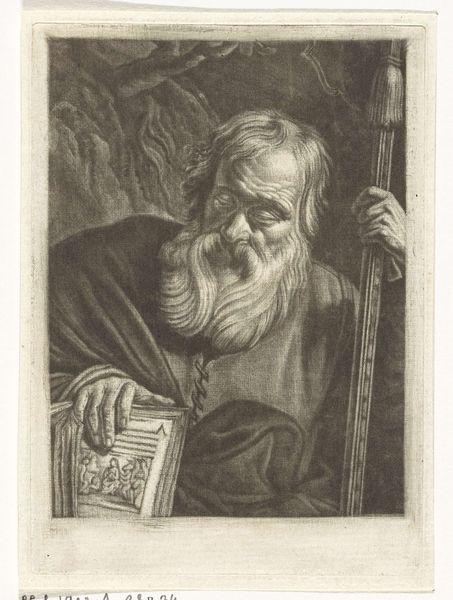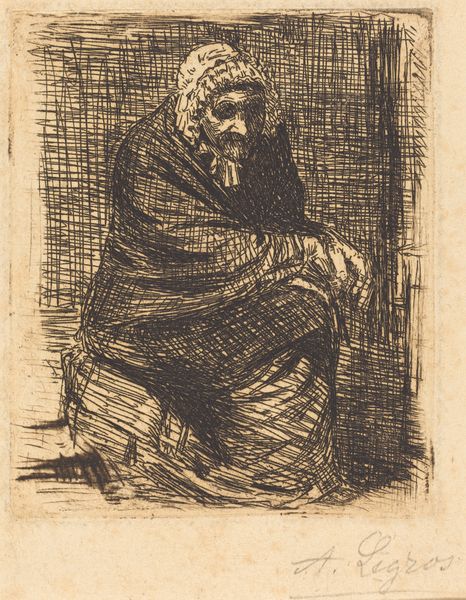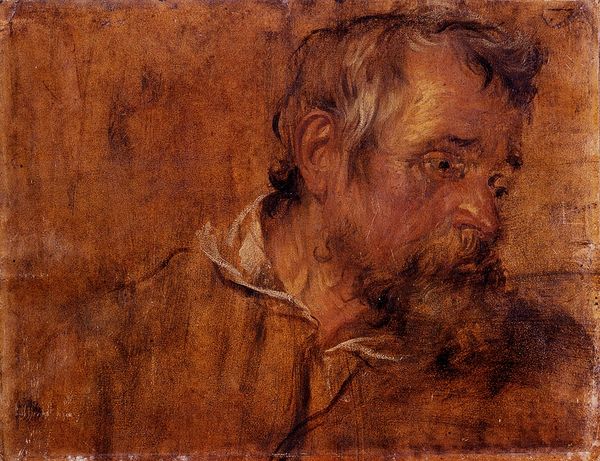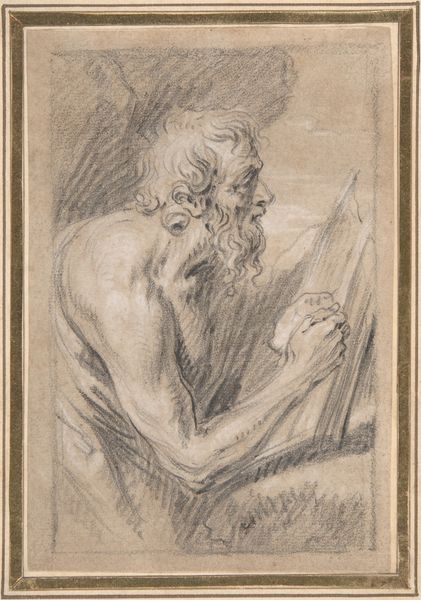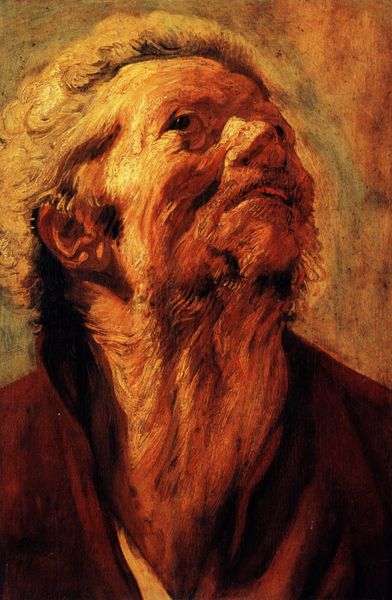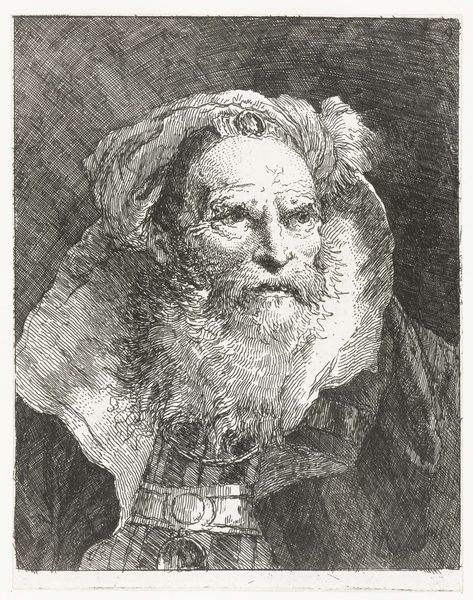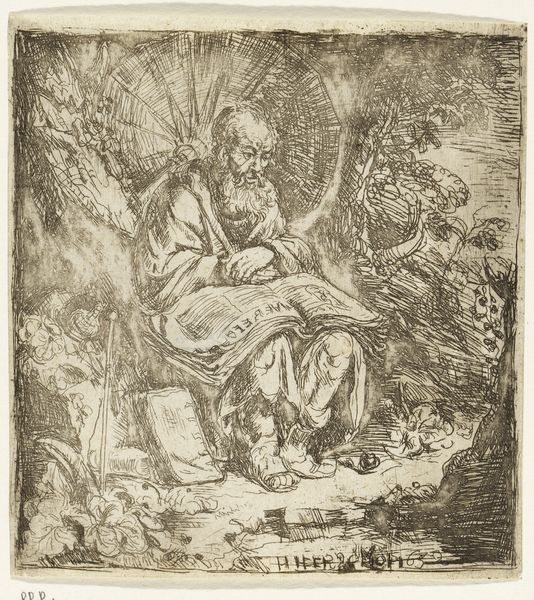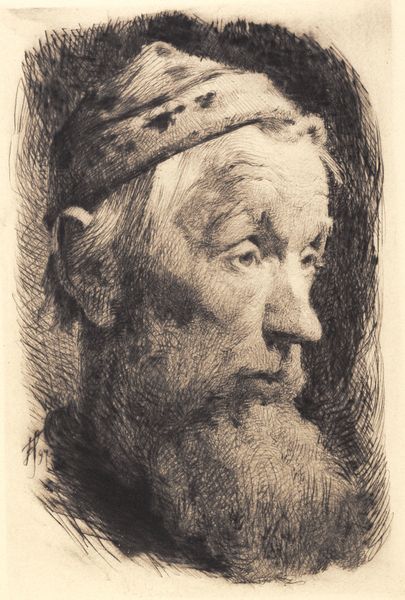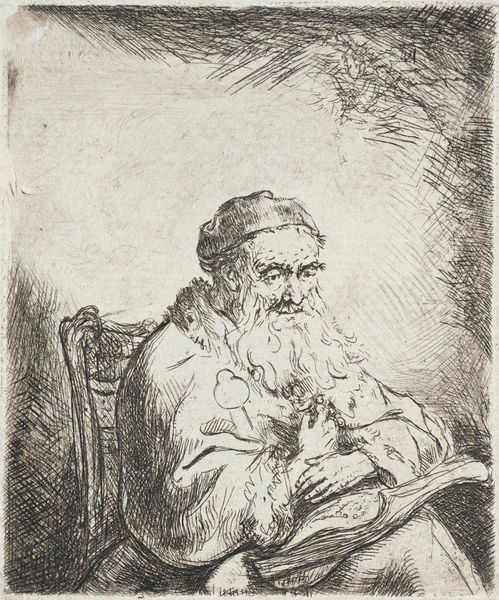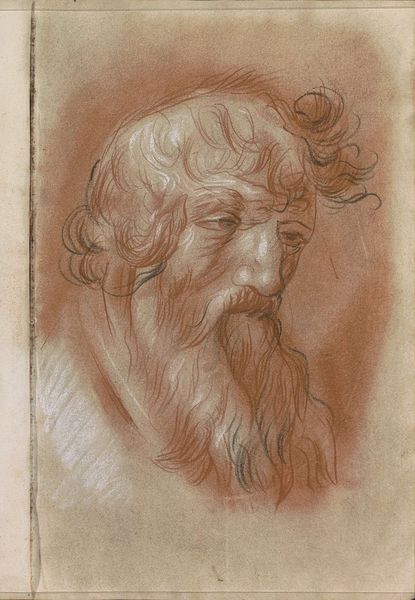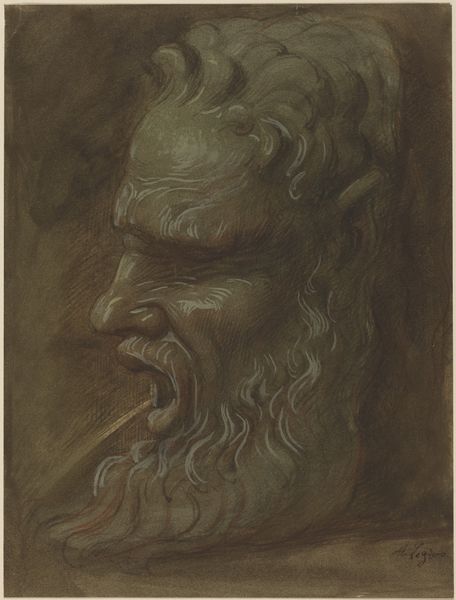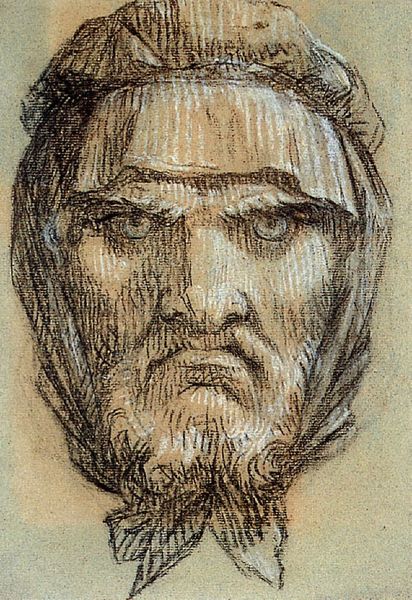
drawing, paper, watercolor, ink
#
portrait
#
drawing
#
narrative-art
#
landscape
#
paper
#
oil painting
#
watercolor
#
ink
#
watercolour illustration
#
modernism
#
realism
Dimensions: 22.9 x 15.2 cm
Copyright: David Burliuk,Fair Use
Editor: This is David Burliuk's "Scientist," created in 1952 using ink and watercolor on paper. It's a strange but compelling portrait; I’m struck by the juxtaposition of the natural setting and the architectural elements, especially that castle-like structure in the background. The bird on the figure’s head is a whimsical, unexpected touch. What do you see in this piece? Curator: Well, immediately, I’m drawn to how Burliuk challenges traditional notions of portraiture, especially given the historical period. It's more than just a likeness; it's a statement. Burliuk was deeply engaged with challenging social norms through art, particularly as they intersect with individual expression and historical narratives. Notice how the scientist, though central, is integrated into the landscape? The architectural forms and the natural elements aren't just background; they're part of the scientist's identity, reflecting a modernist desire to find unity in disparate elements. Editor: I see what you mean; it is an integration rather than a simple backdrop. But what's the significance of, say, the bird? Is it symbolic, or simply an oddity? Curator: That's precisely what makes Burliuk so engaging. The bird could symbolize many things: freedom of thought, perhaps, or a connection to nature often disregarded by "rational" scientific pursuits. It pokes fun at the very notion of the "scientist" as an objective, detached figure. It’s a deliberate act of disruption against established hierarchies of knowledge and being. How do you feel about the muted palette Burliuk employed, given his Futurist roots? Editor: I suppose it softens the blow, somehow? Maybe makes it feel less like a manifesto and more like a… human moment. I'm starting to see it less as just a portrait, and more as commentary. Curator: Exactly. It's about questioning, engaging, and ultimately, re-evaluating the narratives we’ve been told, by situating art and science in relation to human existence. Editor: Thank you, I understand the work a lot more clearly now and appreciate your point about the painting being part of broader narratives about science and existence.
Comments
No comments
Be the first to comment and join the conversation on the ultimate creative platform.
